Goulan Yao Village, included Daxing Village,Huang Village and Shangcun Village, is surrounded by beautiful mountains and located in Lanxi Yao Minority Township of Jiangyong County, in Central China's Hunan Province .
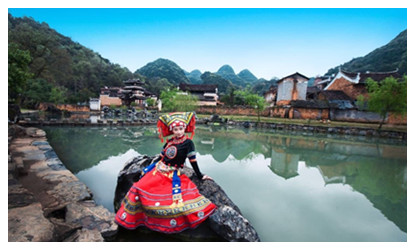
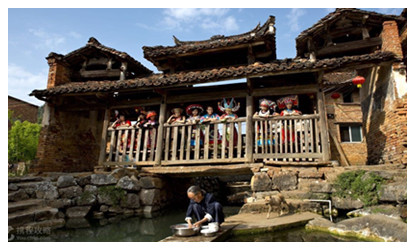
Goulan Yao Village was established around 1396. Today it is home to around 2500 people. The cultivating of rice and other agricultural activities are central to the lives of the villagers. They live in two story houses, one story is home to people, the other to cattle.
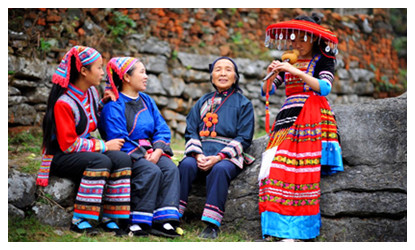
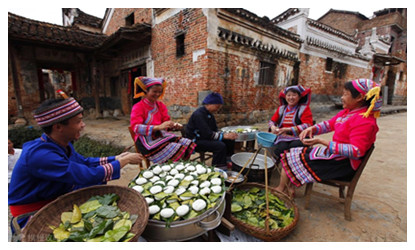 The well-preserved Yao Village is regarded as the ancestral home of Goulan Yao people. A large number of residential buildings built during the Ming and Qing dynasties have still kept intact and folk customs of Yao ethnic people such as Mud-washing Festival and Yao Female Boxing are observed.
The well-preserved Yao Village is regarded as the ancestral home of Goulan Yao people. A large number of residential buildings built during the Ming and Qing dynasties have still kept intact and folk customs of Yao ethnic people such as Mud-washing Festival and Yao Female Boxing are observed.
The Ancestral Hall
In ancient times, the ancestral hall was a religious site for Goulan Yao people living here to worship gods. The fresco was mainly created on the walls of the right-side corridor, the front and both sides of the hall’s main building. In 2016,a 162 sqm of well-preserved fresco painting was discovered in Shuilong (Water Dragon) Ancestral Hall of Daxing Village, Jiangyong County. The ancestral hall and the fresco painting were preliminarily identified by archaeologists as cultural relics dating back to Wanli period of the Ming Dynasty (1573-1620).
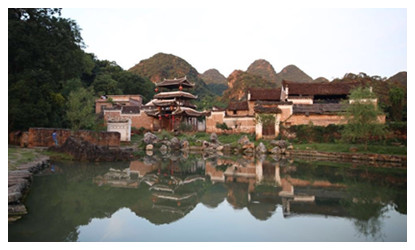
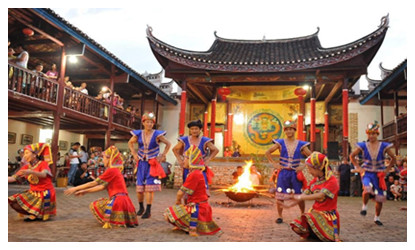
Straw Made Artworks Display at Goulan Yao Village
Goulan
Yao village is home to Yao ethnic minority people, whose village is situated a little distance away from the fields on which they rely to make their living.
The right photo shows workers are fixing various kinds of “straw sculpture” featuring farming culture characteristics at a rape flower field of Goulan Yao Minority Village a famous Chinese historical and cultural village on March 24, 2016.
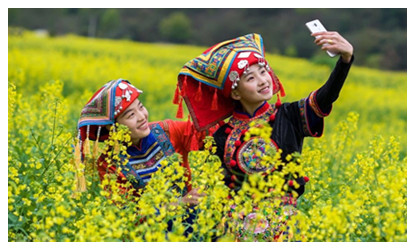
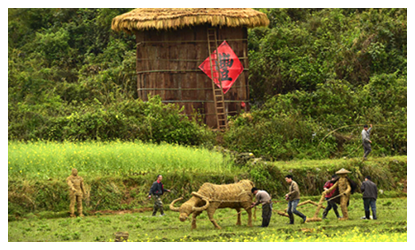
Mud-washing Festival in Goulan Yao Village
Every year during the busy harvest season, the men spend the whole day tilling the fields, while the women stay at home, prepare clothes and food for their laboring husbands, and occasionally help out in the fields if needed. In the evenings, they have a list of household chores to attend to, in preparation for the toil of the next day.
Mud-washing Festival marks the end of this busy season, and is a celebration of past, present and future—they wash the mud off their feet after their previous weeks of work, they dance and sing at the happiness of households and families being reunited and couples returning home to each other, and they pray for blessings for a bumper harvest next time. The whole village is happy and joyous.
In 2012, Mud-washing Festival was added to the third batch of Hunan Intangible Cultural Heritage. In 2014, Goulan Yao Village was listed as the sixth batch of
China’s famous historical and cultural villages by the Ministry of Housing and Urban-Rural Development of
China and the State Administration of Cultural Heritage












 Ask Questions ?
Ask Questions ?